The roasting depth listed in the roasting degree of raw coffee beans is deepened one by one.
The baking depths listed below are gradually deepened
Green beans (Green Coffee)
Unbaked beans have a green appearance and change color with the degree of baking.
Light Roast
The mildest baking method, the appearance is wheat color, after extraction, no fragrance, bitter taste, not suitable for drinking
cinnamon roast
Light Roast, cinnamon in appearance, more aromatic than Light Roast, good quality beans with sour taste, this baking method can stimulate its sour taste.
Medium Roast
Moderately roasted chestnut color, beginning to produce sour and bitter taste, soft taste, suitable for blending sour as the main body of American coffee.
High Roast
Slightly intense medium baking, brown in appearance, acidity suppressed, bitterness and sweetness intensified.
City Roast
Strong medium roast, City means New York City, sour and bitter just right.
Full City Roast
Deep-baked is darker than City Roast, with almost no sour taste.
French Roast
Deep roasted beans are light black and feel like fat is about to spill out. Suitable for coffee omelets and Viennese coffee.
Italian Roast
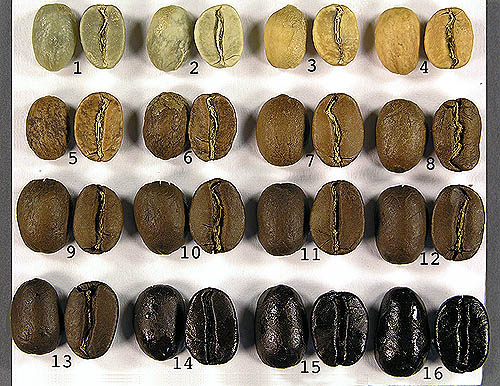
Egstrom value Baking degree Weight loss Baking progress
#84-#87 Very shallow baking 8%-13% one explosion dense to tail explosion
#69-#65 shallow cultivation 11%-14% end of explosion
#64-#60 Light medium baking 13%-15% End of explosion about 30-40 seconds
#59-#55 Medium baking 14%-16% The end of the first explosion is close to the end of the second explosion, and the beans turn to endothermic.
#54-#44 Medium deep baking 16%-18% Second explosion begins 20-40 seconds Initial explosion stage, beans exothermic
#43-#36 Deep baking 17%-19% Second explosion starts 40-100 seconds, dense explosion sounds appear
#35-#26 South Italy Deep Bake 19%-21% Second Explosion About 100 seconds later enters tail explosion
#25-#18 French re-training 21%-23% Second explosion ends, white smoke turns to blue smoke, beware of fire
This is the coffee science suggestion, compares the Chinese to change some, may refer to under.

Eight or five or several baking degrees have a "certain" reference
However, certain roasting degrees do not fully reflect the characteristics of the coffee bean itself
You'll see later that baking techniques can't be divided into "degrees of roasting," and that concept should have been phased out long ago.
Let me give you a few examples of baking knowledge:
The beans that are dried for a long time and quenched at a high temperature will taste very different even if they are baked to a similar color.
Coffee beans of the same type and different mesh numbers will taste completely different even if they are roasted in similar colors, because of their different heating abilities;
Coffee beans of different densities will also be produced differently in the same roasting mode, which roasters usually call "soft beans" and "hard beans";
Wash beans, semi-washed beans, sun beans and other different processing methods with the same baking mode will produce different, need to keep trying to find the best dehydration time for these beans, because a little bit of unripe beans and under-dehydrated beans will produce bad off-flavor;
Old beans and new beans will produce differently with the same baking mode, involving moisture content and freshness;
Electric and gas-fired roasters produce completely different products, gas-fired roasters pull up the baking curve more quickly;
Direct fire, semi-direct fire, hot air and other different heating methods of the roaster products will be completely different, each roaster baking temperature, smoke exhaust capacity, drum speed, fire stability, damper size, cooling speed after the beans and other factors are affecting the taste of coffee, and then two baking temperature curve bar;
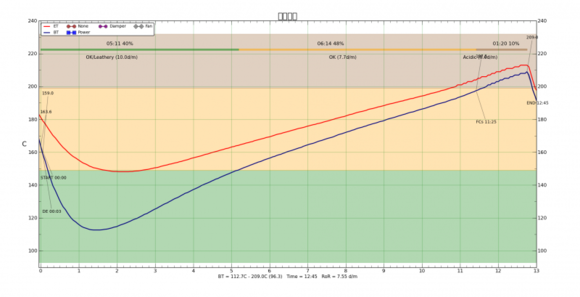
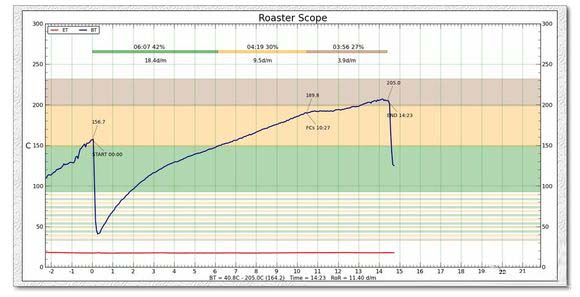
Two identical beans, baked in the same roaster, but using different techniques to bake the same color, the taste difference will be quite obvious. Just as a kenyan "medium roast" can produce attractive red wine aromas, citrus sweetness, and floral aromas, a "deep roast" can evoke distinctive tobacco, cigar, rotting wood, and increased sweetness, which can also be intoxicating. But as tasters, we don't know exactly what its medium and depth are.
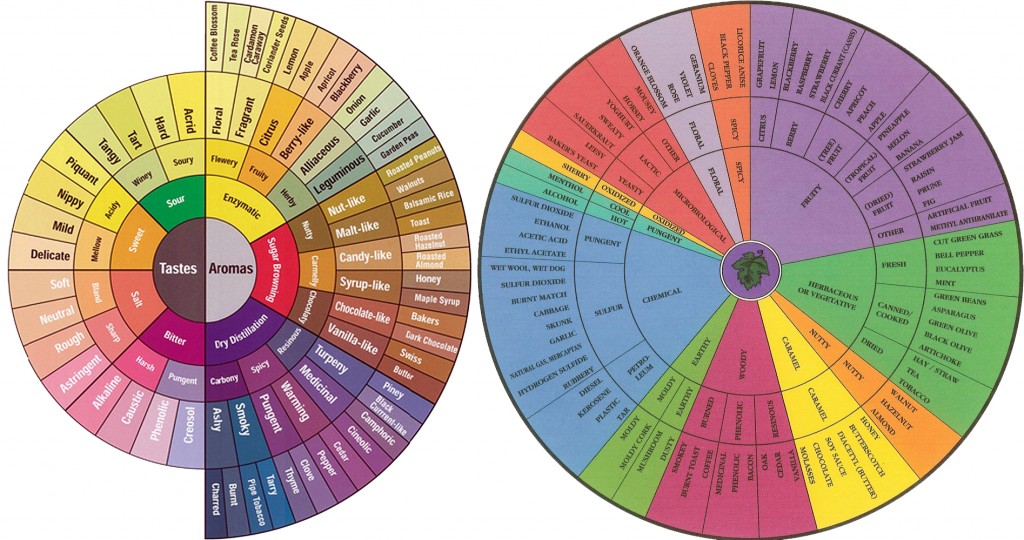
Therefore, the variety in baking cannot be explained in terms of several types. If a baker can bake beans in only eight stages, that's just enough to fool the public.
This is not to answer the question of the landlord, nor is it aimed at the data listed above. I just hope that the students who have read it can have a little understanding of the changes in baking. Bake depth can be used to refer to or illustrate some information, but it is not completely correct. When we are still in the novice learning stage, it is not necessary to specifically understand the concepts of "the end of the first explosion","the beginning of the second explosion","urban baking","French baking", so as not to produce "what baking degree of beans tastes best?" "What kind of baking power should I buy?" Such questions fall into deeper misunderstandings.
Important Notice :
前街咖啡 FrontStreet Coffee has moved to new addredd:
FrontStreet Coffee Address: 315,Donghua East Road,GuangZhou
Tel:020 38364473
- Prev
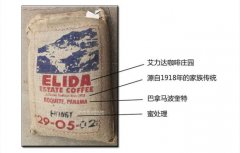
Panamanian Pokuit boutique coffee beans roast Alida Farm.
Panama, a country that people know too well, has always had an inextricable bond with high-quality coffee. It tastes fresh, elegant and floral. Sweet honey has always been a recognizable symbol of Panamanian high-quality coffee, making it unforgettable for those who drink it. This time we bring you not Esmeralda's rosy summer, nor Berlina's coffee beans, but another famous farm in Pokuit, ELI.
- Next

The power of coffee roasting the charm of freshly roasted coffee beans
World-famous coffee enterprises regard strong coffee roasting technology as the key to their development, and many coffee people regard mastering professional coffee roasting technology as the only way for their own development. Many friends who love coffee will plan to open their own cafe and want to have their own coffee space while enjoying coffee. In a space filled with the smell of sweet coffee
Related
- Beginners will see the "Coffee pull flower" guide!
- What is the difference between ice blog purified milk and ordinary milk coffee?
- Why is the Philippines the largest producer of crops in Liberia?
- For coffee extraction, should the fine powder be retained?
- How does extracted espresso fill pressed powder? How much strength does it take to press the powder?
- How to make jasmine cold extract coffee? Is the jasmine + latte good?
- Will this little toy really make the coffee taste better? How does Lily Drip affect coffee extraction?
- Will the action of slapping the filter cup also affect coffee extraction?
- What's the difference between powder-to-water ratio and powder-to-liquid ratio?
- What is the Ethiopian local species? What does it have to do with Heirloom native species?

